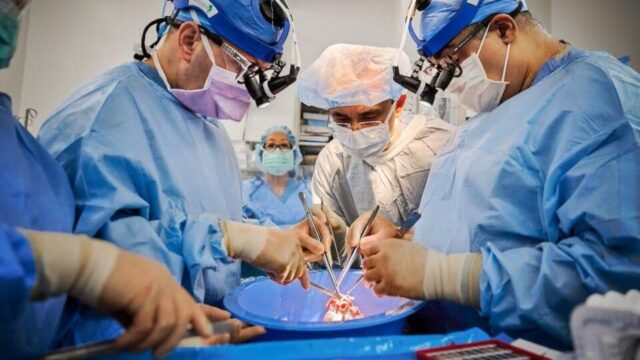The demand for organ and tissue transplantation is expected to increase in the coming years. However, the shortage of organ donations, primarily due to cultural and religious beliefs, is hindering the availability of organs for transplant treatments.
ORGAN failure occurs because of various factors that include loss of blood, serious trauma, drug abuse, poisoning, sepsis, leukaemia and other acute diseases.
The demand for organ and tissue transplantation – mainly heart, kidney, lungs and liver – is very high.
This demand for organ and tissue transplantation is expected to increase in the coming years.
However, many people are prevented from donating organs due to customary beliefs, religious beliefs and a lack of understanding regarding organ donation.
Consequently, the lack of organs available for organ transplant treatment will likely hamper the market growth. The supply and demand of organs for the treatment of organ failure are significantly out of balance.
According to a 2019 US Department of Health and Human Services report, there were 43,201 individuals waiting for kidney transplants overall, but only 23,401 surgeries were completed.
Lawrence Faucette, the second person in the world to receive a genetically modified pig’s heart in an experimental transplant, has died.
The 58-year-old patient lived for nearly six weeks after receiving the transplant in mid-September.
According to reports published by euronews.next before his death on October 30, Faucette was doing physical therapy and spending time with family. His heart had started showing signs of rejection, a challenge with human organ transplants as well.
Bartley Griffith, the surgeon responsible for the care of Mr Faucette at the University of Maryland Medical Centre, expressed deep sorrow over the loss of “this extraordinary individual”.
He added: “Faucette, known for his roles as a patient, scientist, Navy veteran, and devoted family man, simply yearned for more time with his loving wife, sons, and beloved family.”
In a statement, Griffith revealed Faucette’s final wish entailed making the most of the knowledge gleaned from their unique experiences.
He added: “This would ensure that others facing the unavailability of a human organ would have an assured opportunity for a new heart. Mr. Faucette’s desire to leave behind a lasting impact on the field of organ transplantation resonated strongly with Dr Griffith and the medical team.”
Before making medical history in September, Faucette battled terminal heart disease. He became the second person globally to undergo a transplant involving a genetically modified pig’s heart.
Another patient, David Bennett, who faced a similar ineligibility for a human heart transplant, also received life-changing surgery at the University of Maryland Medical Centre. Tragically, Bennett passed away two months after the experimental procedure.
The use of animal parts in human medicine, such as pig hearts, has gained attention and interest in recent years. Known as xenotransplantation, it involves transplanting organs, tissues, or cells from one species to another.
While xenotransplantation is not yet a common practice in human medicine, there are several reasons why it is gaining attention and the medical profession is exploring its potential.
One of the main reasons for considering xenotransplantation is the critical shortage of human organs available for transplantation. The demand for organs far outweighs the available supply, leading to long waiting times and thousands of individuals dying while waiting for a suitable organ.
Using animal organs, such as pig hearts, could potentially help overcome this shortage and save lives.
Pigs are being considered as suitable sources of organs due to their physiological similarities to humans. Their organs are of comparable size, making them potentially compatible for transplantation.
Pigs also have a relatively short lifespan compared to larger animals, making it easier to breed them specifically for organ donation purposes.
Recent advancements in genetic engineering provide opportunities to modify pigs in ways that reduce the risk of organ rejection and other complications.
In the US, it is estimated that more than 6,000 people die each year before getting an organ transplant.
Muhammad Mohiuddin, director of the University of Maryland School of Medicine’s cardiac xenotransplantation programme said, “As with the first patient, David Bennett, we intend to conduct an extensive analysis to identify factors that can be prevented in future transplants; this will allow us to continue to move forward and educate our colleagues in the field on our experience.”
The significance of these groundbreaking surgeries is underscored by the fact that the US Food and Drug Administration (FDA) granted emergency authorisation in both cases.
This highlights the potential implications and advancements in medical science that these procedures represent.








